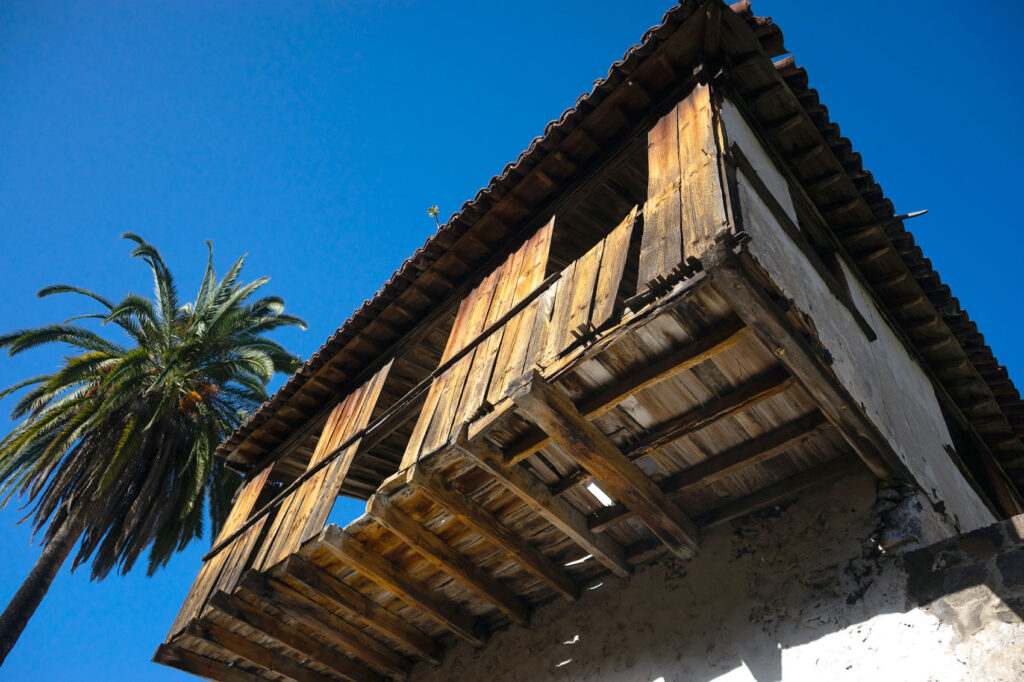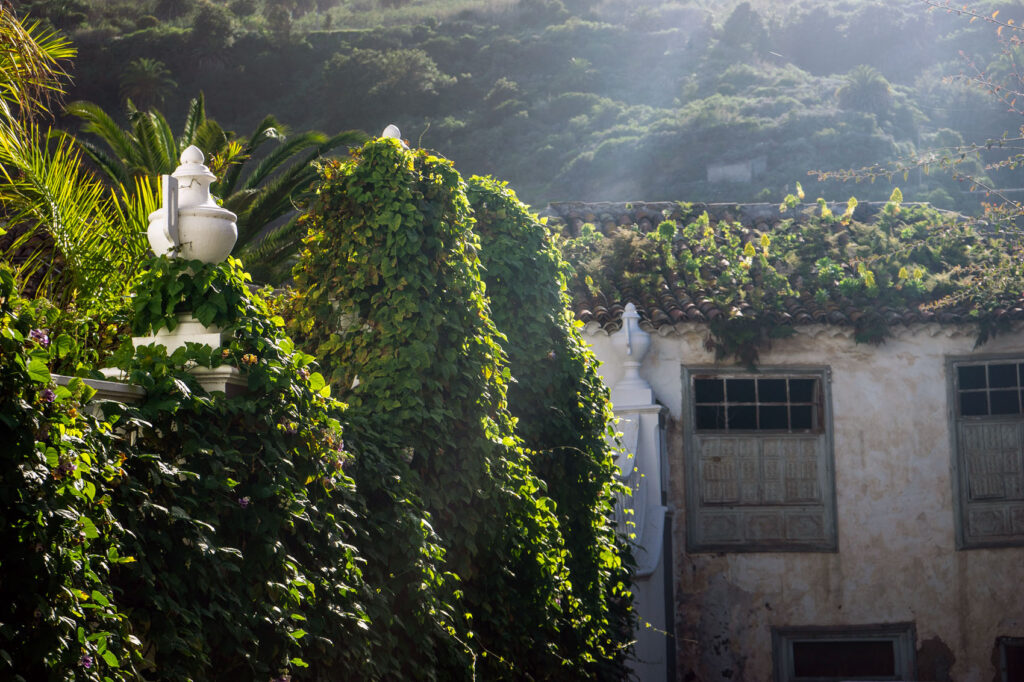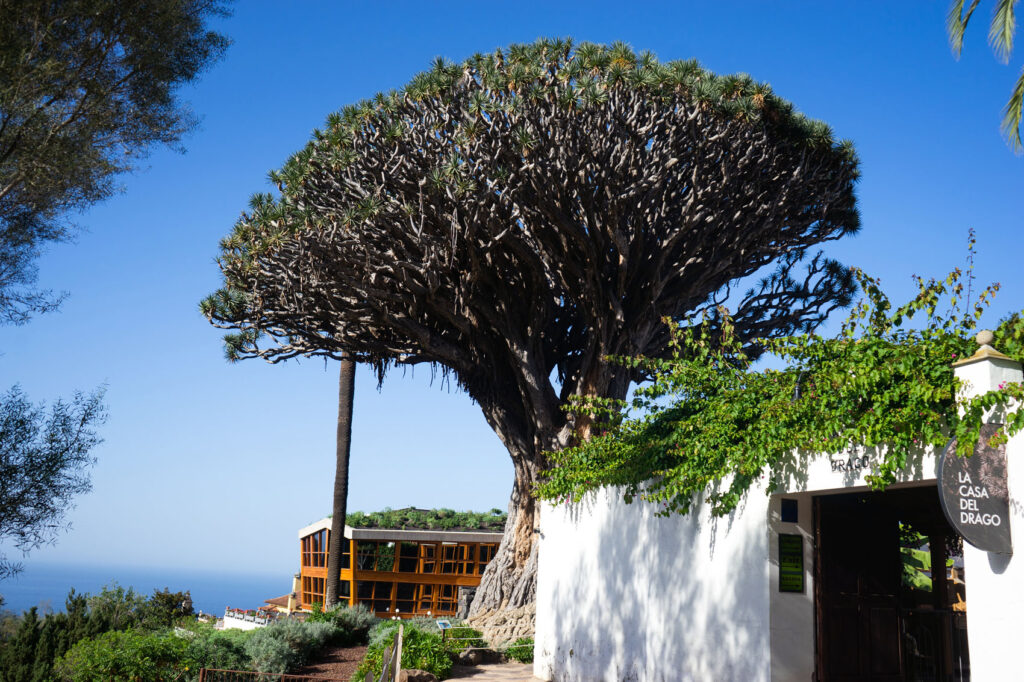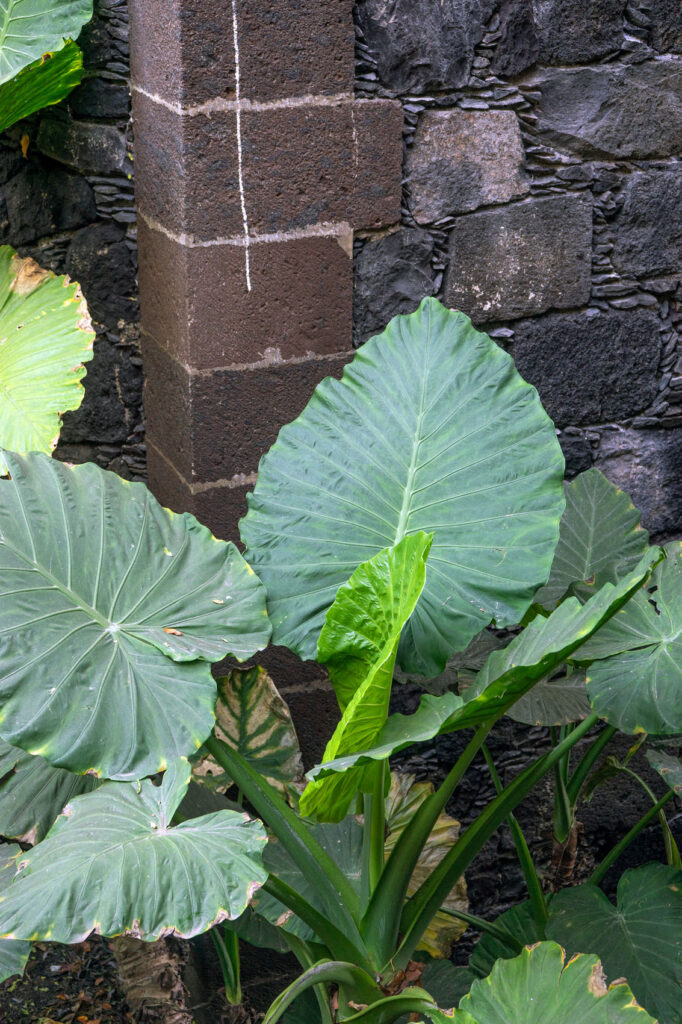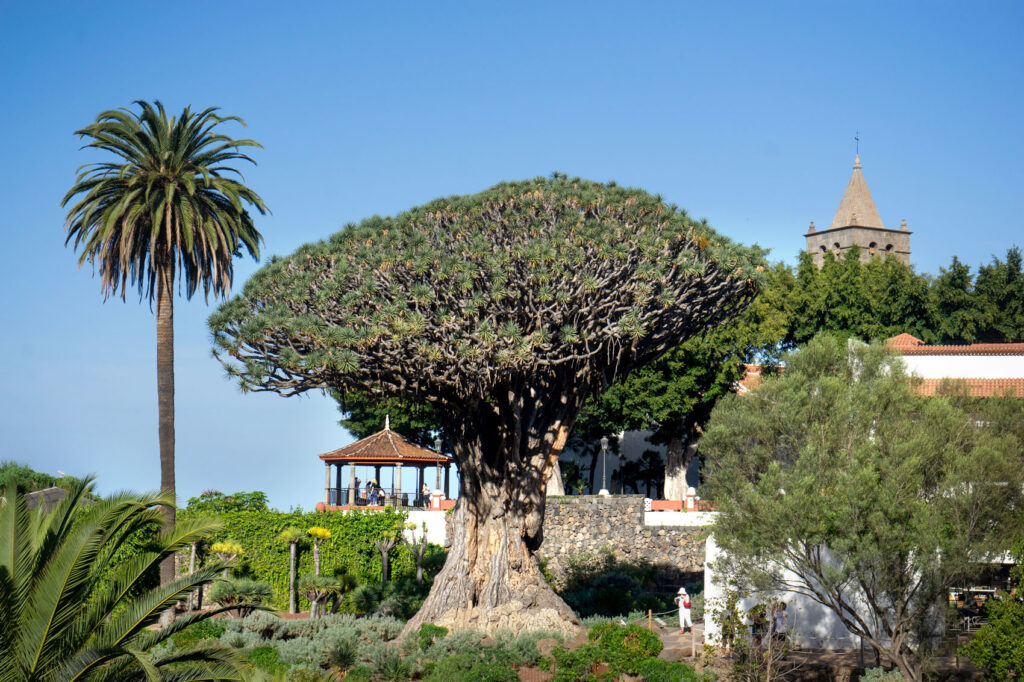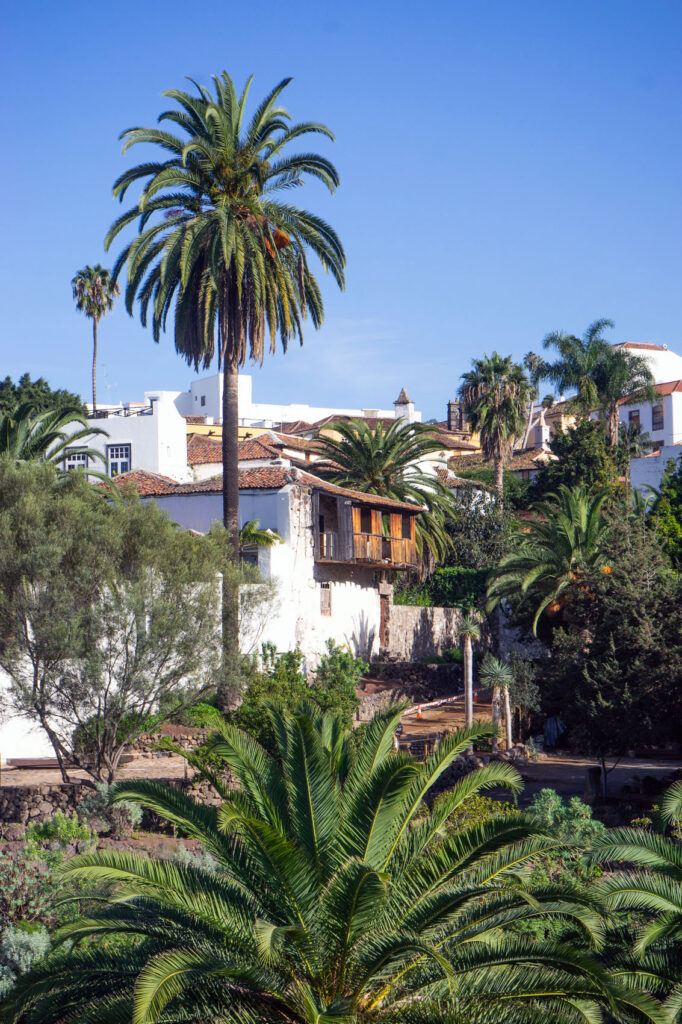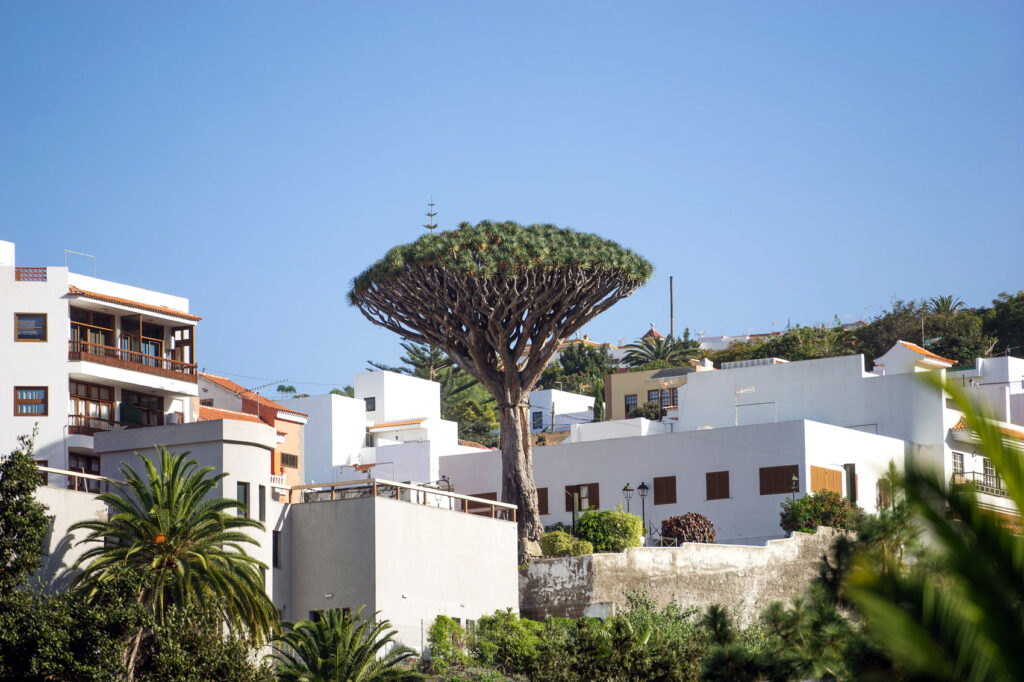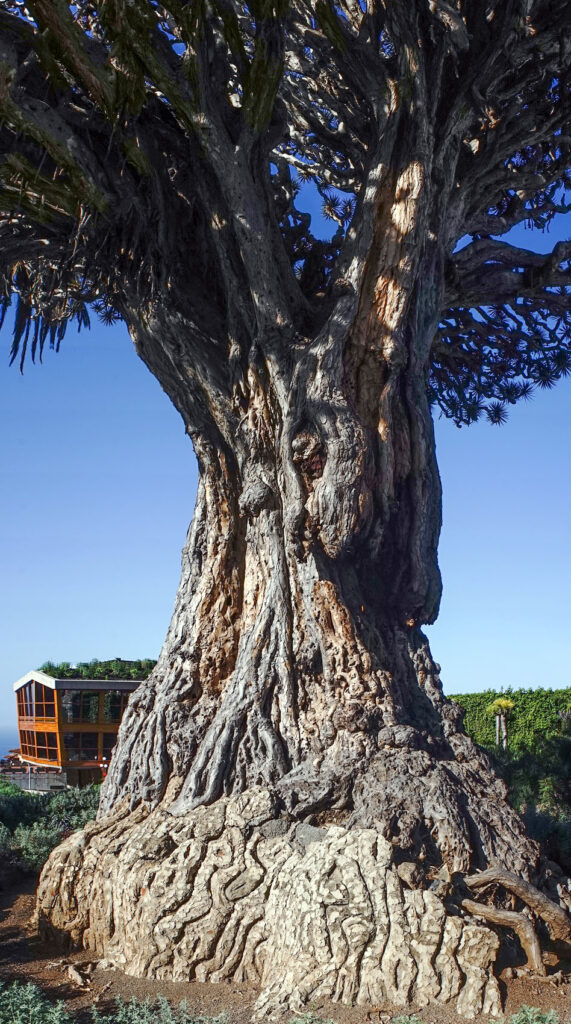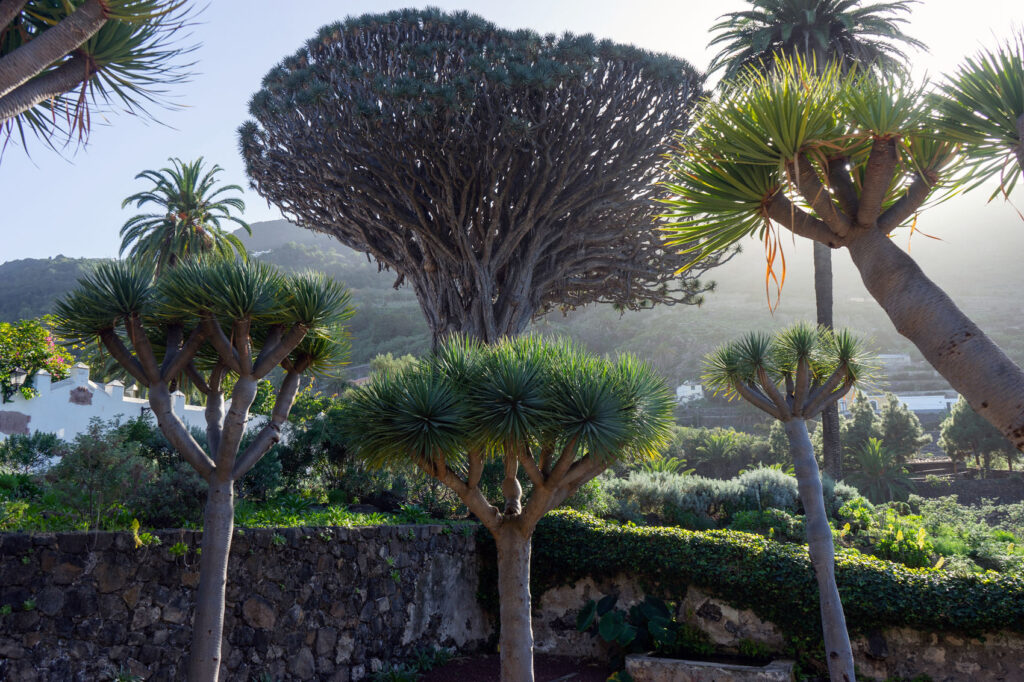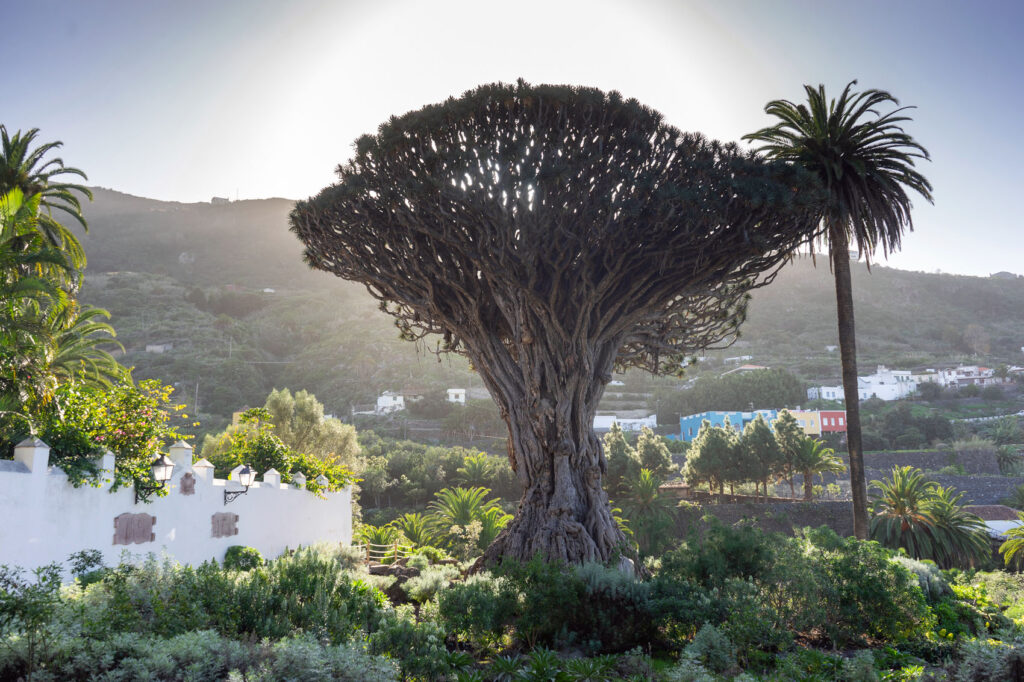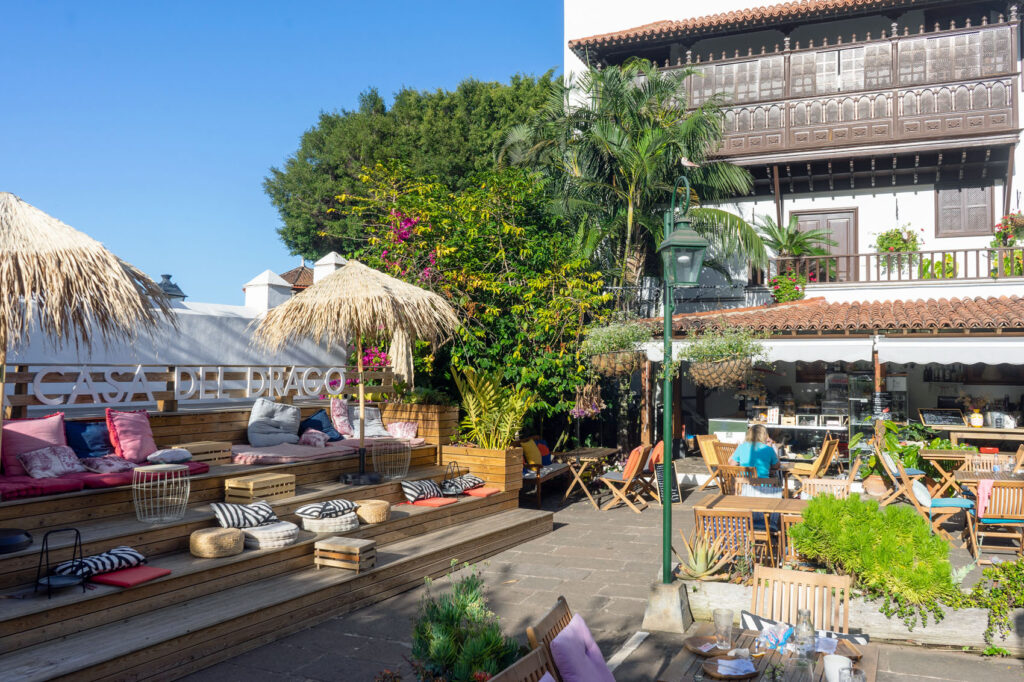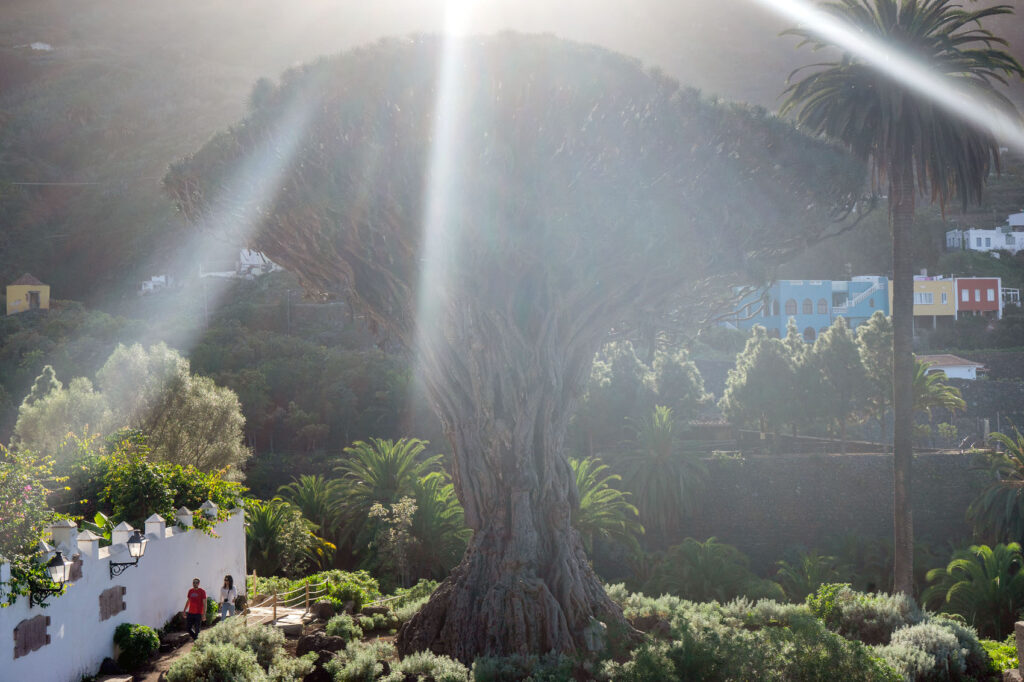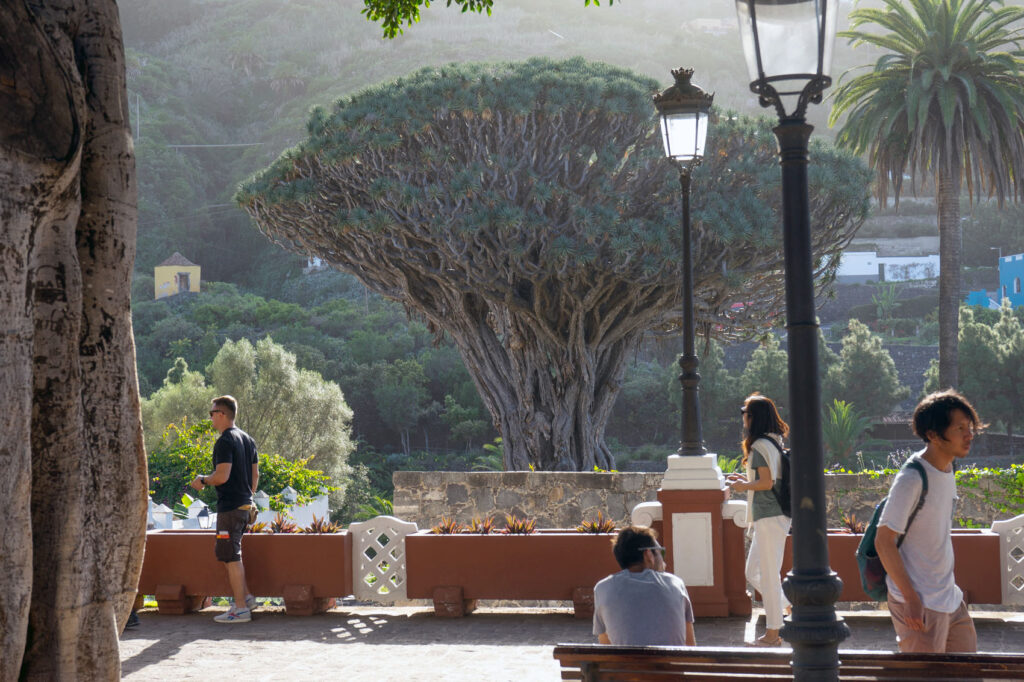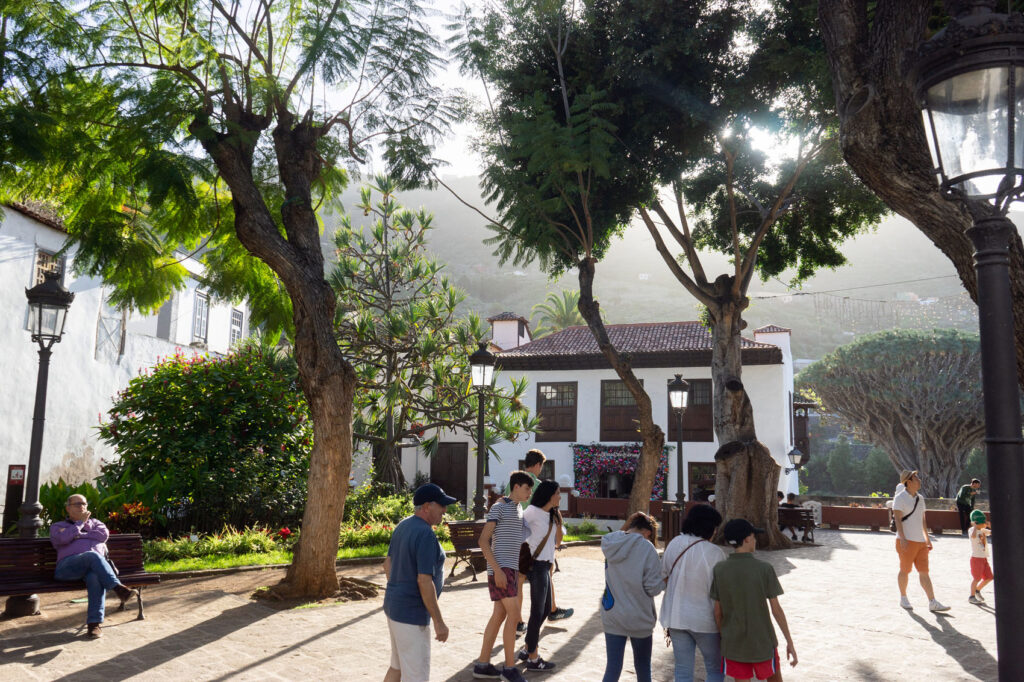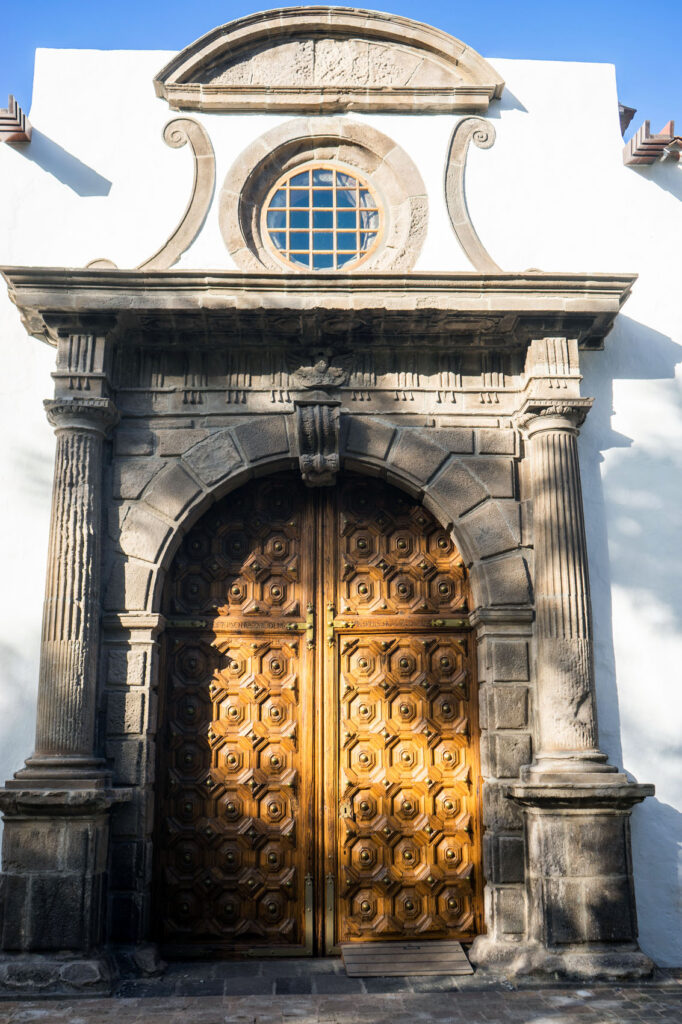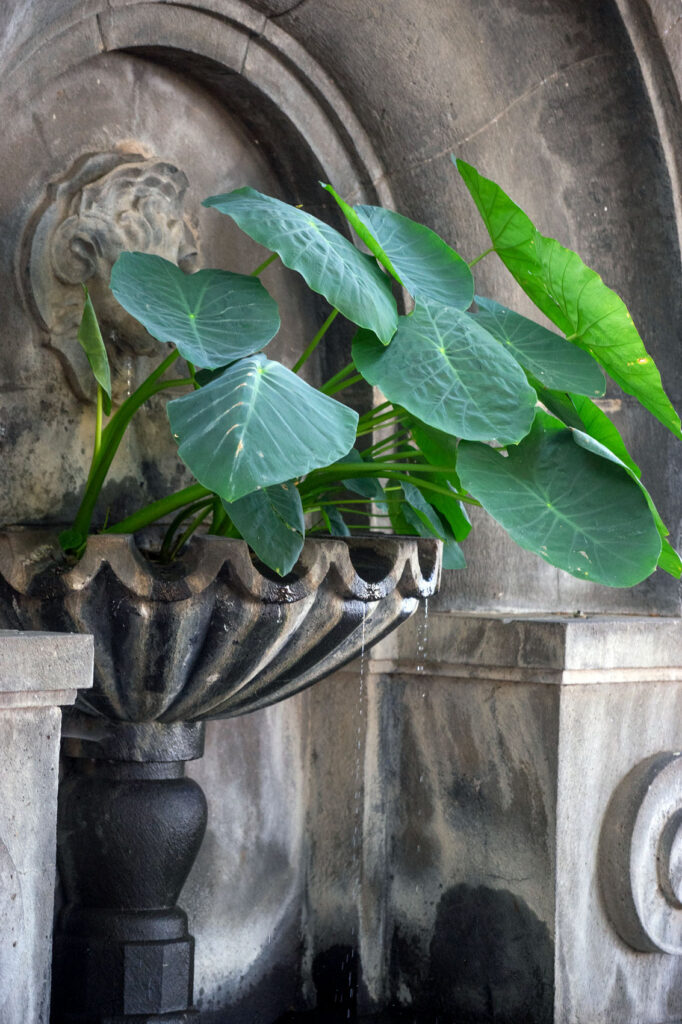The Dragon Trees of Tenerife
The natural symbol of Tenerife is its unmistakable Dragon Tree… or “Drago”, if you’re Spanish… or “Dracaena draco”, if you’re some kind of horticulture geek. These trees are native to the Canary Islands, and known for the red “dragon’s blood” they ooze when cut. The largest example of their species can be found in Icod de los Vinos, though they’re easily spotted just about everywhere on the island.

I was surprised to learn that dragon trees aren’t related to palm trees, which I had assumed given their appearance, but are (weirdly) a member of the asparagus family. At the beginning of its life, it’s just a single stem rising into the air, but after about ten years, it begins to flower and branch, eventually taking on its broccoli-like stemmed structure. The trees can live to be hundreds, and possibly even thousands of years old.
Icod’s famous tree is known as the “Drago Milenario”, although scientific estimates on its age vary wildly, from a few hundred years, to over a thousand. But what nobody can dispute is the tree’s magnificence. How many other trees have their own Wikipedia page? (That’s actually a good question; there are probably more than I realize.) Icod’s Drago Milenario is twenty meters tall, and twenty meters around, and has nearly two thousand branches. Standing underneath the tree and looking into its maze of stems is entrancing, like examining a magnified brain synapse, or the world’s most bewildering maze.
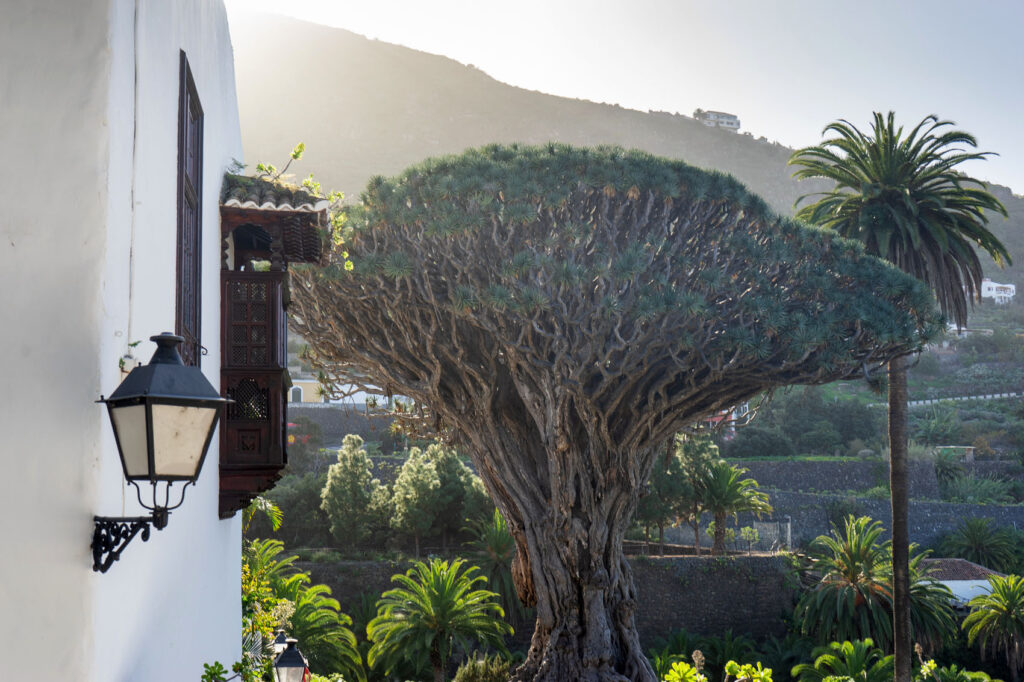
It’s a little unfortunate that Icod has decided to monetize its coolest resident, by setting up an otherwise forgettable park around it. But I suppose a degree of control was needed, and the €5 entrance fee won’t break the bank. If you want to save some cash, and don’t need to stand directly next the tree, a great view can also be had from the terrace of the Iglesia de San Marcos Evangelista, across the road.
Dragon trees were endangered for a time, victims of rapid development and absolute ignorance about conservation (the classic one-two sucker punch of the early-to-mid 20th century). But they’ve been making a comeback, as people have woken up and realized the heritage they were about to lose. Today, you can see dragon trees in parks, forests, and even in people’s front yards. They’ve also become popular in other places around the world as ornamental trees.
Now that I’m thinking about it… a small dragon tree for our terrace might make the perfect souvenir from Tenerife.

